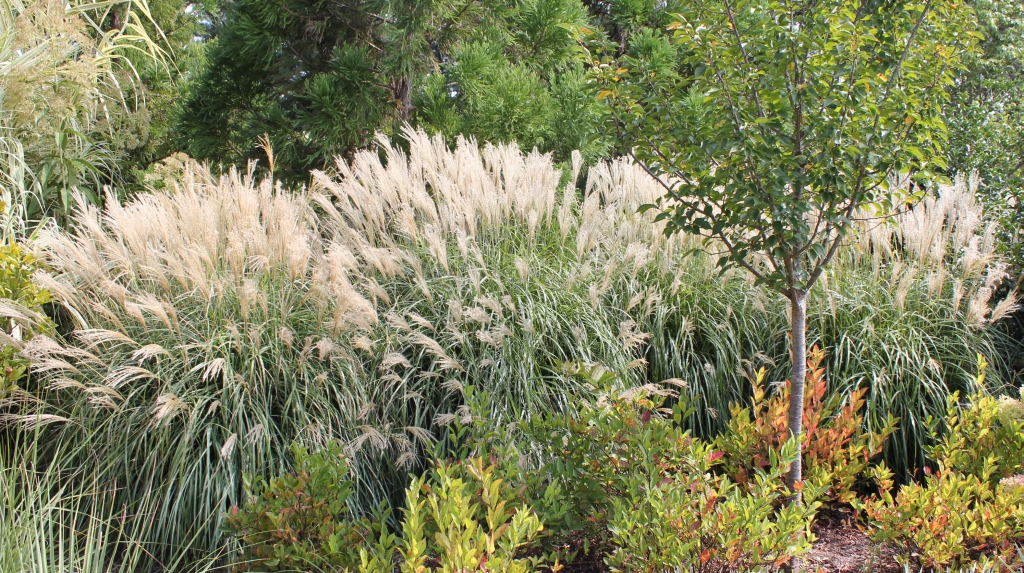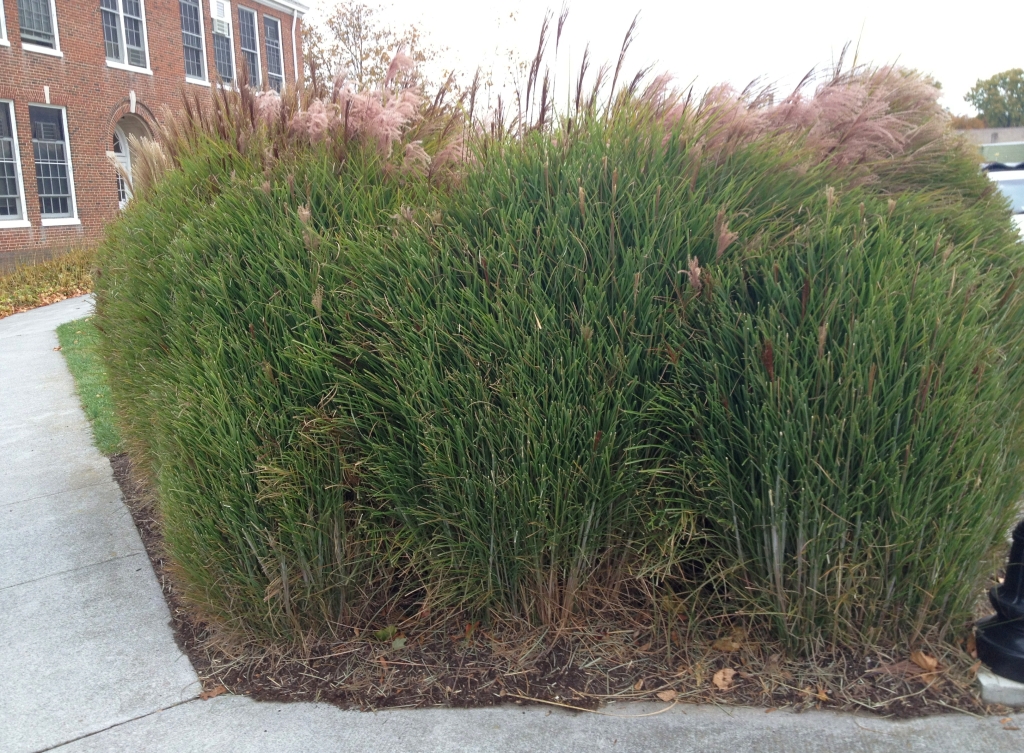No, no, no.
NO.

Textbook “right plant, wrong place.” Miscanthus sinensis is tough, drought tolerant, creates a nice screen, and if the late-blooming cultivars such as ‘Gracillimus’ and ‘Morning Light’ are selected, has little chance of seeding all over. After a few years in place, most cultivars are as wide (or wider) than they are tall. The lovely mounding/flowing habit is why this is the number one ornamental grass sold.

A better option – a very upright grass such as Calamagrostis x acutiflora ‘Karl Foerster.’ Regardless, this stuff needs to come out. Depending how long it’s been in the ground, a backhoe with probably be required. Or, they can continue carving it into a pillar.

I have a neighbor who has two perfect, cylindrical columns of western sword fern.
People cut…lilacs in this manner at my husband’s office. On top of that, they cut it in fall so the poor thing never blooms.
Just take out the front row already.
Alternative to removal or shearing: bind the individual plants to create top-knotted sheaves in late fall – works
even along our snow-plowed road and is pleasingly architectural. This also makes for less mess at clean-up in spring.